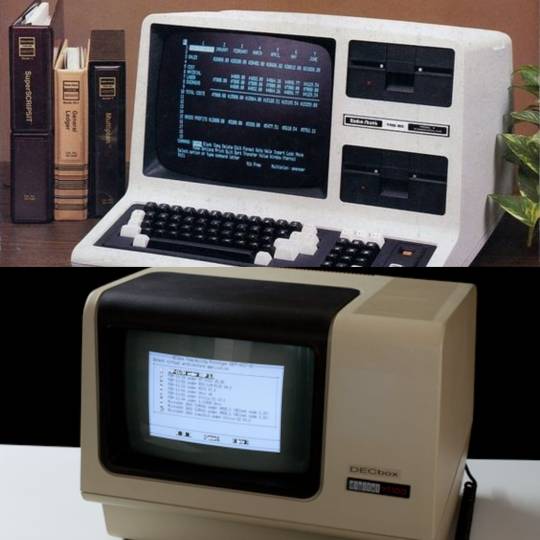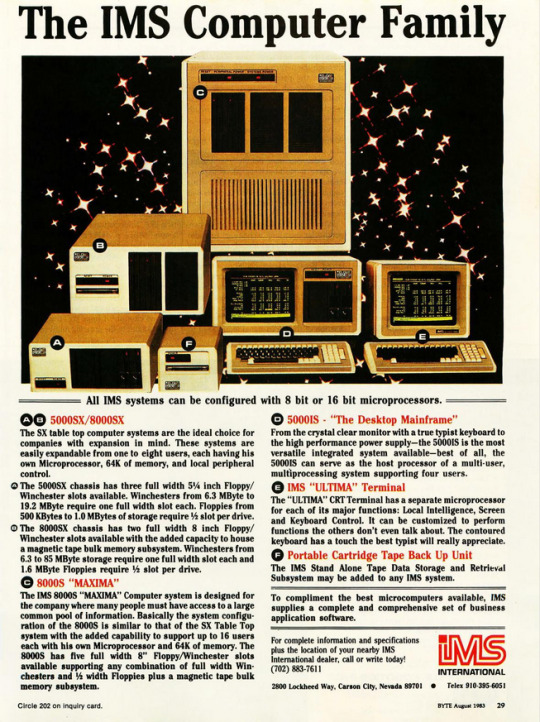#classiccomputing
Explore tagged Tumblr posts
Text

#Tech#Computer#RetroTech#Retro#RetroTechnology#RetroComputers#VintageComputer#RetroComputing#Magazine#VintageAd#Amiga#CreativeImpulse#ClassicComputing#OldComputers#CreativeTechnology#AmigaComputers
177 notes
·
View notes
Text







🎄💾🗓️ Day 14: Retrocomputing Advent Calendar - Atari 400/800🎄💾🗓️
The Atari 8-bit computer line was launched in 1979 with the Atari 400 and Atari 800. Both were advanced for home computers at the time. Both were driven by a 1.79 MHz MOS Technology 6502 CPU, with ANTIC and CTIA/GTIA custom chips for advanced graphics and the POKEY chip handling sound and input/output duties. The Atari 800 was the premium model, featuring a full mechanical keyboard, user-expandable to 48 KB of memory, more metal shielding, and more durability. The Atari 400 was a lower-cost alternative with a membrane keyboard, limited to 16 KB of RAM, and a simplified construction.
With hardware-accelerated scrolling, Player/Missile graphics, and rich sound, the Atari 8-bit systems were known for gaming and creative applications. They were a versatile platform with cartridge-based software, cassette, and floppy disk storage. Atari's proprietary SIO (Serial Input/Output) port allowed daisy-chaining peripherals such as printers, modems, and disk drives, making connecting them easier than with other systems.
Newer models were more compact, combined memory expansion to as much as 128KB, and compatibility with developing software and peripherals improved. Atari's 8-bit computers are remembered for having groundbreaking hardware and a very colorful game library, and they are still being used by the retrocomputing community.
While doing research for this, I saw the XE Game System, never saw it before, very 80s for sure!
The Atari XEGS (XE Game System) was launched in 1987. A repackaged 65XE with a removable keyboard, it boots to the 1981 port of Missile Command instead of BASIC if the keyboard is disconnected.
Have first computer memories? Post’em up in the comments, or post yours on socialz’ and tag them #firstcomputer #retrocomputing – See you back here tomorrow!
#retrocomputing#atari#atari400#atari800#8bit#vintagecomputer#classiccomputing#retrogaming#computerhistory#1970s#homecomputer#technology#electronics#gaming#6502#mos6502#antic#ctia#gtia#pokey#firstcomputer#retro#oldcomputer#vintagegaming#hardware
71 notes
·
View notes
Text
1962 Mainframe with Bluetooth
This old computer is comprised of four big boxes, three of which are ever actually used.
The UNIVAC 1219. This is the brains of the system. It controls the operations of every other device. This is what I'm referring to when I'm not gesturing to the UNIVAC 1219 as a whole.
The UNIVAC 1540. This is the DDR, or Digital Data Recorder. It holds, writes, and reads the magnetic tape operators load into the machine.
The Digital to Analog Converter. The UNIVAC 1219 was the first digital computer on most U.S. Navy ships, most of which had analog weapons systems. This hulking mass of steel translated the digital signals from the computer to the analog signals of the weapon systems and vice versa in regards to the radar.
The UNIVAC 1532. The I/O console managed the...you guessed it, input and output of the UNIVAC 1219. You can load and punch paper tape for programs more bite-sized than would be used for magnetic tape.
In addition, we have two teletype machines. You can think of them like typewriters that don't receive human input (except the one that can if we want), but instead output what the computer tells it to. We have a Teletype Corporation teletype that is optimized for character compatability and a Kleinschmidt teletype that is optimized for speed. Both rely on the I/O console to send and receive data.
The real ingenuity begins with the floppy drive. Duane, who's career revolved around this system, developed a way for a floppy drive to imitate the I/O console. The computer thinks it is reading and writing to a paper tape, when it is in fact reading and writing to a 5.25in floppy inside an ancient CNC machine floppy drive.
And this, dear reader, is where the magic happens. This framework was originally built for interfacing with the 1219 via BIN files over Serial port and was easily changed to support BIN files over floppy. Duane has been working on an off adapting our purple converter box with a raspi to let the 1219 read and write BIN files over Bluetooth.
Make no mistake, you cannot simply SSH into this machine as tons of setup and channel changes must be performed to ready it to receive and send data. That being said, I don't see any other UNIVAC mainframes with Bluetooth [or any other running UNIVAC 1219s at all :(], so I will take what I can get.
Can someone tell me how to Tumblr properly?
#VintageComputing#Mainframe#UNIVAC#RetroTech#ComputerHistory#OldTechnology#LegacySystems#HistoricComputers#AntiqueTech#ComputerArchaeology#VintageHardware#ComputingPioneers#UNIVAC1219#ClassicComputing#DigitalArchaeology#computer#new jersey#us navy#u.s. navy#navy#old computers#new blog#new user#technology#tech#vintage computing#retro computing#retro tech#retro#retro computer
150 notes
·
View notes
Text
Windows XP Professional: A Step Backwards or Forwards in the Light Through the PC Windows
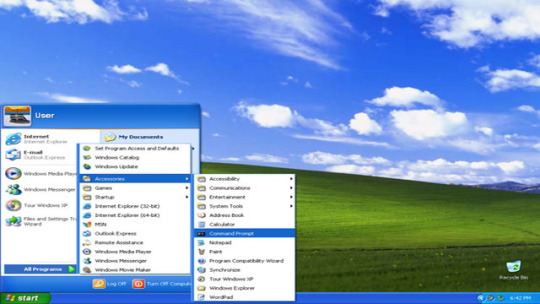
For those who seek that classic feel of the old architecture, there is the traditional computing option. retrieve the dawn of Windows XP Professional, chalked up as the golden egg until the demise of the behemoth and during the reign of Windows 7 came into experience. Not another working system that was so well-loved, having it's hard to love design and sturdy dependable body can compete against regular users everywhere. If there is a thing that you simply want to breathe new life into your old computer and also you think that Windows XP still have its appeal, am sure others share the same thoughts. Is overseas, the Windows XP Professional version is fully-compatible with 32-bit and 64-bit PCs and, as always, it is free! Why do you need Windows XP Professional said you?Let's explore:Why do you need Windows XP Professional said you?Let's explore: Effortless Speed: Feel rejoiced as WindowsXP’s speed of loading is astonishing when you turn on the computer and runs the programs without any time lag. These are the two primary reasons you can remain efficient and productive. Rock-Solid Stability: By using our product you will be experiencing much fewer frustrating crashes and freezes that have given you troubles. Due to the task of generating a stable and vivid computer experiences, Windows XP Professional is well-known. Feature-Rich Experience: Whether it's the effortless Wi-Fi connections, or a built-in CD burning feature- the list is endless; the Windows XP Professional version is a smart platform built to keep you productive on the go. Robust Security: With the built-in VPN Support and Internet Connection Firewall in Windows XP, you may data life from any possible online threats. Installing Win XP Professional seems to be not a big deal, as the fact is that it is not so strict in requirements for hardware.��Need nothing but in a finger-click you will have the ISOs and start traveling through the old days that you can hardly forget!
So, why wait? Embrace the nostalgia and rediscover the magic of Windows XP Professional today! Grab your device and join us on a journey through computing's golden age.
Windows XP Professional ISO download
0 notes
Text

Finally, a new (used) keyboard membrane for my Amiga 600
#Commodore#Amiga#RetroComputing#RetroGaming#VintageComputing#90sComputing#retro#vintage#classic#Workbench#RetroHardware#ClassicComputer#Nostalgia
34 notes
·
View notes
Photo

Happy New Year! #happynewyear #rolandspeakers #classiccomputer https://www.instagram.com/p/B6wOwEanDWq/?igshid=12ot41i1mkwlh
0 notes
Photo

صندوق الالعاب Rubystations بالفئات الخمسة جاهز للشحن إن شاء الله . . لم يتبقى الا كمية محدودة حالياً سارع بحجز جهاز العابك الآن! #sinclairspectrum #retrocomputing #retrogames #videogaming #nintendo #retrocollective #vintage #instagamer #gamerforlife #gamerlife #memories #retrocollective #videogames #Sinclair #spectrum #80s #gamerforever #oldschoolgaming #8bit #zxspectrum #cassette #nintendo #sega #Atari #classiccomputing #80slife #rceeurope #vintagegaming #vintagecomputer #gamersunite #sega #takemebacktuesday
#classiccomputing#memories#oldschoolgaming#instagamer#atari#retrocollective#spectrum#gamerforlife#sega#videogaming#zxspectrum#cassette#nintendo#retrogames#vintage#sinclairspectrum#retrocomputing#sinclair#videogames#vintagegaming#rceeurope#vintagecomputer#gamerlife#gamerforever#gamersunite#8bit#80s#takemebacktuesday#80slife
0 notes
Photo

I feel that this manual for the Kaypro II version of Donkey Kong raises more questions than it answers. Of course I would find a giant box of Kaypro II games after my Kaypro II went MIA. Seriously I have looked everywhere and cannot find that thing. Would love to try out this version of Donkey Kong it looks like an unconventional romance game judging by the cover. #donkeykong #classiccomputer #vintagecomputer #retrogaming #gamecollecting #gamecollection #gamehunting #videosofacquiredgames #retrocollective #gameroom #consolecollection #gameshelf #mondocoolmunity #nintendo #nes #nintendoentertainmentsystem #supernintendo #supergameboy #supergameboy2 #snes #nintendo64 #n64 #nintendogamecube #nintendowii #wii #nintendowiiu #nintendoswitch #kayproii https://instagr.am/p/CMKXEZMH2yy/
0 notes
Text
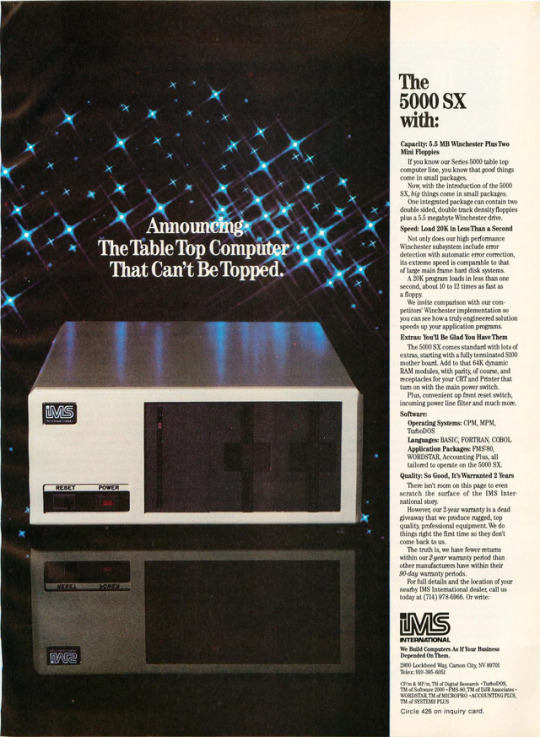
#Tech#Computer#RetroTech#Retro#RetroTechnology#RetroComputers#VintageComputer#RetroComputing#Magazine#80s#1980s#ComputerHistory#OldSchoolComputing#VintageTech#TechHistory#ClassicComputers#VintageAds
39 notes
·
View notes
Text


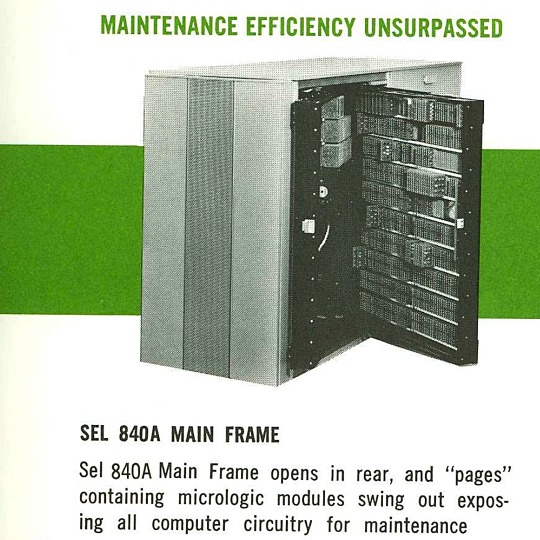
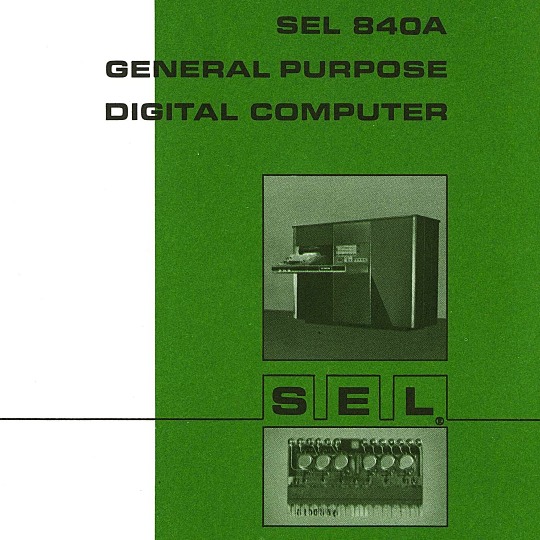
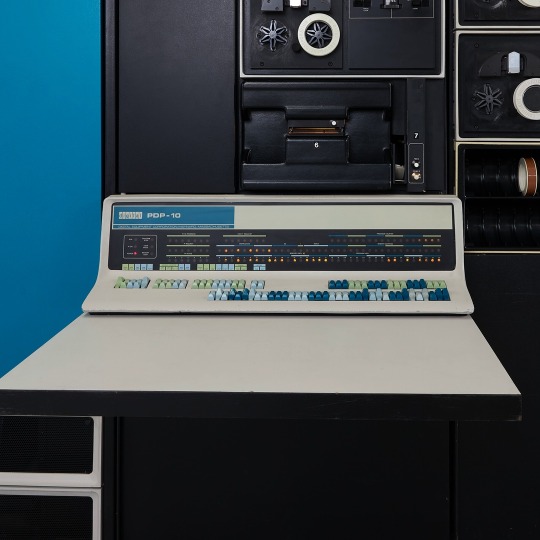

🎄💾🗓️ Day 11: Retrocomputing Advent Calendar - The SEL 840A🎄💾🗓️
Systems Engineering Laboratories (SEL) introduced the SEL 840A in 1965. This is a deep cut folks, buckle in. It was designed as a high-performance, 24-bit general-purpose digital computer, particularly well-suited for scientific and industrial real-time applications.
Notable for using silicon monolithic integrated circuits and a modular architecture. Supported advanced computation with features like concurrent floating-point arithmetic via an optional Extended Arithmetic Unit (EAU), which allowed independent arithmetic processing in single or double precision. With a core memory cycle time of 1.75 microseconds and a capacity of up to 32,768 directly addressable words, the SEL 840A had impressive computational speed and versatility for its time.
Its instruction set covered arithmetic operations, branching, and program control. The computer had fairly robust I/O capabilities, supporting up to 128 input/output units and optional block transfer control for high-speed data movement. SEL 840A had real-time applications, such as data acquisition, industrial automation, and control systems, with features like multi-level priority interrupts and a real-time clock with millisecond resolution.
Software support included a FORTRAN IV compiler, mnemonic assembler, and a library of scientific subroutines, making it accessible for scientific and engineering use. The operator’s console provided immediate access to registers, control functions, and user interaction! Designed to be maintained, its modular design had serviceability you do often not see today, with swing-out circuit pages and accessible test points.
And here's a personal… personal computer history from Adafruit team member, Dan…
== The first computer I used was an SEL-840A, PDF:
I learned Fortran on it in eight grade, in 1970. It was at Oak Ridge National Laboratory, where my parents worked, and was used to take data from cyclotron experiments and perform calculations. I later patched the Fortran compiler on it to take single-quoted strings, like 'HELLO', in Fortran FORMAT statements, instead of having to use Hollerith counts, like 5HHELLO.
In 1971-1972, in high school, I used a PDP-10 (model KA10) timesharing system, run by BOCES LIRICS on Long Island, NY, while we were there for one year on an exchange.
This is the front panel of the actual computer I used. I worked at the computer center in the summer. I know the fellow in the picture: he was an older high school student at the time.
The first "personal" computers I used were Xerox Alto, Xerox Dorado, Xerox Dandelion (Xerox Star 8010), Apple Lisa, and Apple Mac, and an original IBM PC. Later I used DEC VAXstations.
Dan kinda wins the first computer contest if there was one… Have first computer memories? Post’em up in the comments, or post yours on socialz’ and tag them #firstcomputer #retrocomputing – See you back here tomorrow!
#retrocomputing#firstcomputer#electronics#sel840a#1960scomputers#fortran#computinghistory#vintagecomputing#realtimecomputing#industrialautomation#siliconcircuits#modulararchitecture#floatingpointarithmetic#computerscience#fortrancode#corememory#oakridgenationallab#cyclotron#pdp10#xeroxalto#computermuseum#historyofcomputing#classiccomputing#nostalgictech#selcomputers#scientificcomputing#digitalhistory#engineeringmarvel#techthroughdecades#console
28 notes
·
View notes
Note
Does your 1219 have a nickname?
Also, I was wondering if you have any fun stories surrounding it! Strange quirks it has or anything like that.
I'd love to see more photos if you're allowed to post them!
Thanks for the question! These are my favorite part about my blog by far.
Not exactly, the UNIVAC 1219 doesn’t have a nickname. I did realize recently that I should specify the pronunciation (Twelve-Nineteen), but it doesn’t have any nicknames. Apart from ‘the 1219’, it’s also regularly referred to as the CPU or just ‘the computer’.
Fun stories or weird quirks? Boy, I could fill a book with this machine’s weird quirks (or as we say, intermittent issues), but I’ll try to blitz through the most common ones:
Sometimes the computer will stop running and enter a WAIT mode. No reason, it just needs a break. We can’t fix it, it just has to decide to go back into operating mode.
The computer will often start attempting to communicate on IO channel 13. We’re not telling it to talk to anything, it just decides to try to.
One of our teletypes (the Kleinshmidt) stamps ink splotches into the paper rather than characters most of the time. However, this weekend it worked for the first time in 10 months! We didn’t change anything, it just had an extra cup of coffee or something.
The Digital Data Recorder, or the tape drive, has the most gremlins out of any of our units. The top handler works fairly well, but the bottom handler won’t properly read data, write data, move the tape forward, initialize the tape, or any number of other issues.
There’s more but hopefully this satisfies your curiosity.
Fun stories? Well, I can’t name any specific ones, but I can say it’s a very endearing machine. It’s the very last of its kind and being one of three individuals in the world responsible for it makes every issue that more frustrating. There is no real forum for it, the subject matter experts sit next to me and are often just as exasperated as I am.
But the unique nature of this situation make every successful diagnostic test that much sweeter. Every new addition (5.25” floppy drive via serial) that much cooler. I have an IBM PC-XT clone at home, but I thank my lucky stars every day that this big iron is what I get to specialize in.
As for more photos, I have none that are as grandiose as you would probably expect. I do have my working photos though. I took all my photos when I first started working on it and now I am more dedicated to fixes than photo-ops.

This is a photo of our finicky Kleinshmidt teletype. Still has blotches but it actually printed!

This is the back of the bottom handler. Pictured is the vacuum pump in the bottom left (so sudden stops just yank magnetic tape slack rather than ripping tape). The big cylinder in the center is a motor for running the magnetic tape handler itself. The big black ‘hose’ of wires coming out of the steel plate contains all the cables that come right off the handler’s head for reading and writing data!
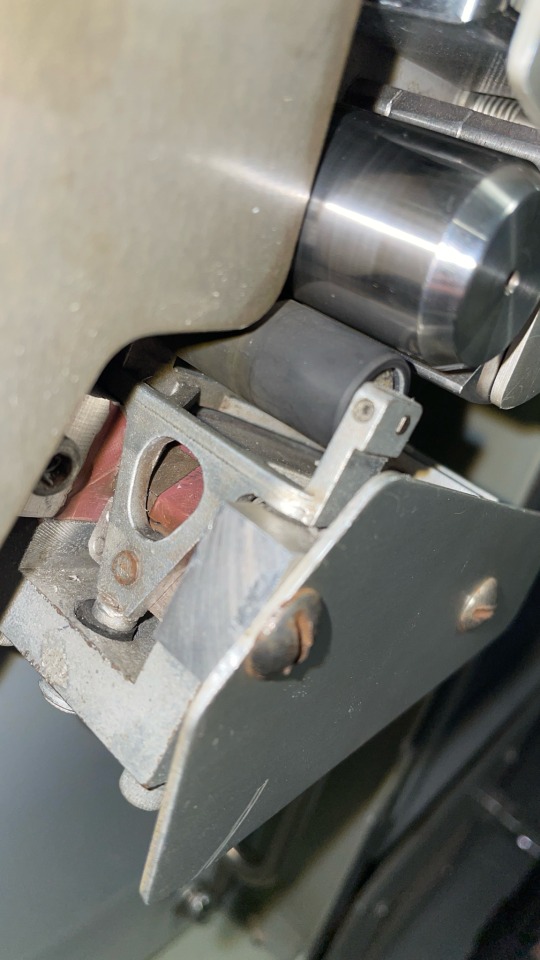
This is the forward pinch roller of the bottom handler. It was replaced after this photo was taken as you can see the rubber has deteriorated in the 55 years this machine has been operating.
As for being allowed to post photos, that’s not an issue. The last 1219 was decommissioned in 2014 and now you can find all of its documentation online at http://www.bitsavers.org/pdf/univac/military/1219/
#vintagecomputing#mainframe#antiquetech#digitalarchaeology#navy#new jersey#oldtechnology#retrotech#tech#univac#new blog#computerarchaeology#computerhistory#old technology#old computers#vintagehardware#classiccomputing#technology#retro tech#big iron#computer
60 notes
·
View notes
Text
Dell 49
Read the full article
#albany#animate#applemonitor#appleproducts#backpain#bigmonitor#cartoonbranding#chiropractic#chiropracticoffice#chiropractictip#chiropractor#classiccomputer#computer#computeraccessory#computerhardware#computermonitor#Computers#dellmonitor#displaydevice#Electronic#electronicdevice#electronics#fortnite#gadget#gadgets#geek#iMac#k#laptop#laptoppart
0 notes
Text


Commodore 64 Emulator VirtualC64 v5.1
#Commodore64#C64#Emulation#RetroGaming#8Bit#HomeComputer#VintageComputing#C64Emulation#HomeComputing#RetroTech#ClassicComputers#OldSchoolComputing#retro
6 notes
·
View notes
Photo

Where my interest in computers began. #IBM #IBMXT #BlackScreenGreenText #OldPC #ClassicComputer #ClassicPC (at uMshwathi) https://www.instagram.com/p/BnVn8GuFJeo/?utm_source=ig_tumblr_share&igshid=1x68aozdafhgp
0 notes
